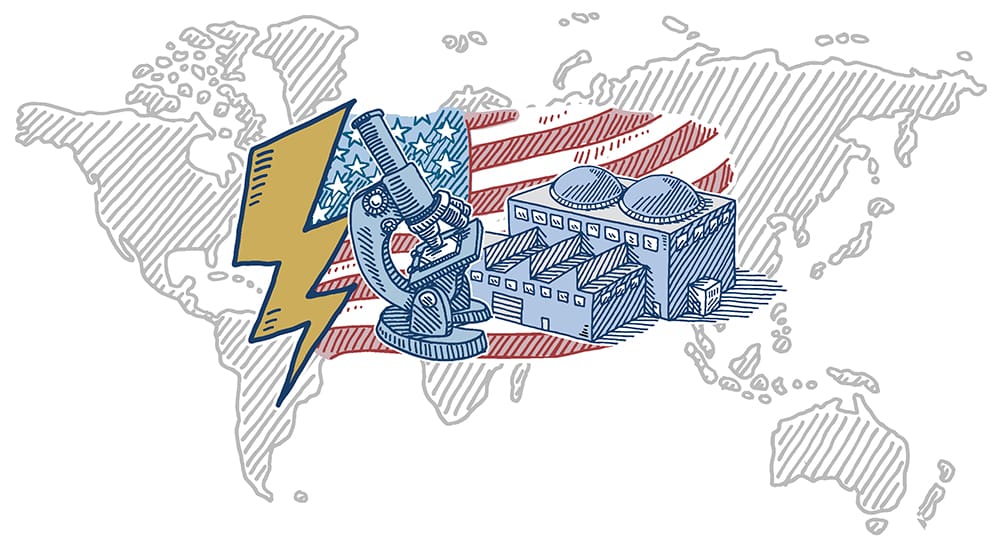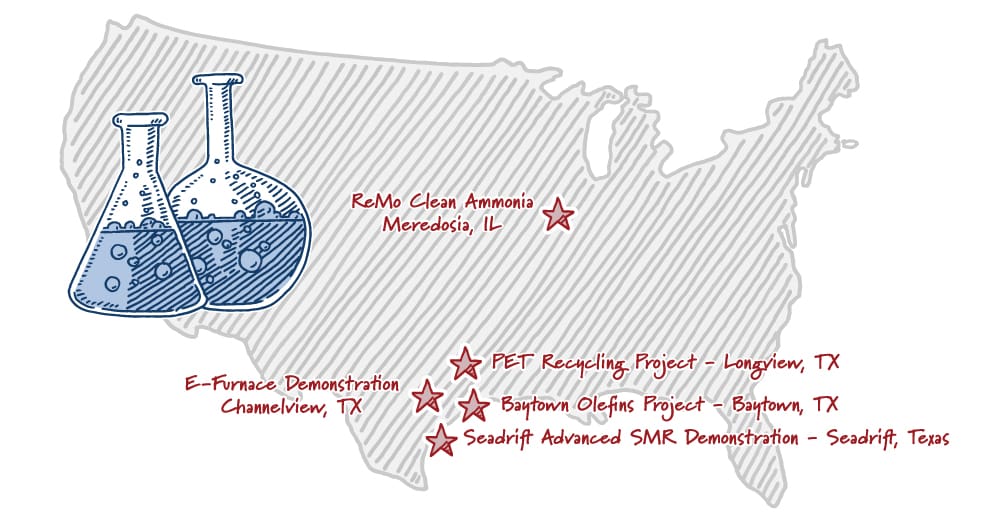Securing Indiana's Nuclear Energy Future
Indiana is on the brink of a new era in energy security–one that will strengthen its economy and pave the way to a reliable energy future. Driven by Governor Braun’s commitment to advanced nuclear power, private sector investments can boost local power generation, provide businesses with predictable energy costs and meet rising demand.
Reimagining Indiana’s grid to capitalize on AI technology and the American manufacturing resurgence will require new state and federal policies to let Indiana build. A multi-faceted effort by Indiana's government, academic institutions and a major utility is underway to explore, incentivize and prepare for the integration of advanced nuclear energy technologies into the state's future energy landscape.
Indiana is facing an unprecedented surge in electricity demand. Regional grid projections indicate that demand will climb nearly 2% annually through 2030, then double to 4% annually through 2040 – a rate that is 10 to 20 times higher than in the past decade. Over the next 15 years, this growth translates to a potential 60% increase in electricity demand – more than Colorado’s energy demand today.
The state government is proactively preparing for this increase. In 2024, it commissioned a study by Purdue University to explore the feasibility and impacts of building new nuclear in Indiana, which identified three key opportunities:
- Supply chain growth is driven by early adopters and can attract new high-value businesses to Indiana, including component manufacturing and workforce development.
- Construction benefits the local economy because many materials, structures and labor are locally sourced.
- Coal site colocation is an opportunity to leverage an existing workforce and infrastructure to grow state energy production while minimizing land use.
Since his inauguration, Governor Braun has committed to exploring pathways for new nuclear projects and is positioning the state at the forefront of energy innovation. Several major milestones advanced this mission:
- In February 2025, Indiana took a leading role in the Advanced Nuclear First Mover Initiative, a 10-state effort that aims to use supportive policies to deploy new nuclear power to meet growing energy demands.
- In April 2025, the State Assembly and Governor Mike Braun enacted SB424, a bill that empowers utilities to act swiftly and strategically, ensuring Hoosiers have access to diverse energy options, including advanced nuclear technology.
- Looking ahead, in the summer of 2025, Indiana is hosting a strategic nuclear energy planning retreat alongside the U.S. Department of Energy and the National Governors Association to create a framework that supports energy security and economic growth through the use of new nuclear technologies. The event will focus on establishing a state-based nuclear working group to develop educational resources and a community engagement strategy and to analyze the potential for economic development.
Support for nuclear energy is recognized at a national level. Over the past eight years, the U.S. Congress has passed several bipartisan bills to support demonstrations, improve regulations and secure America’s nuclear fuel supply. Most recently, Senator James Risch (R-ID) introduced the Accelerating Reliable Capacity (ARC) Act, which mitigates risk and provides insurance against escalating costs. There is undeniable momentum for new nuclear energy in the U.S., particularly in Indiana.
With increasing momentum, companies are taking notice. The utility, Indiana Michigan Power (I&M), applied for $50 million to begin the early stages of nuclear reactor deployment near a coal facility in Rockport, Indiana. I&M is a participant in a coalition of utilities, industry and universities that collectively applied for a public-private partnership of $800 million to advance deployment at several sites.

America needs an energy addition, not an energy transition. With so much growth potential, consider the economic advantages of a robust and reliable energy sector. Businesses will be attracted to Indiana, knowing they can rely on a steady and affordable power supply, especially from a reliable source like nuclear energy. Indiana is positioning itself as a leader in energy innovation and empowering its utilities to plan for the future and adopt new technologies, ensuring it remains a competitive and thriving state for decades to come. By embracing innovation and prioritizing reliability, along with the incorporation of advanced nuclear energy, Indiana can secure its energy future.




